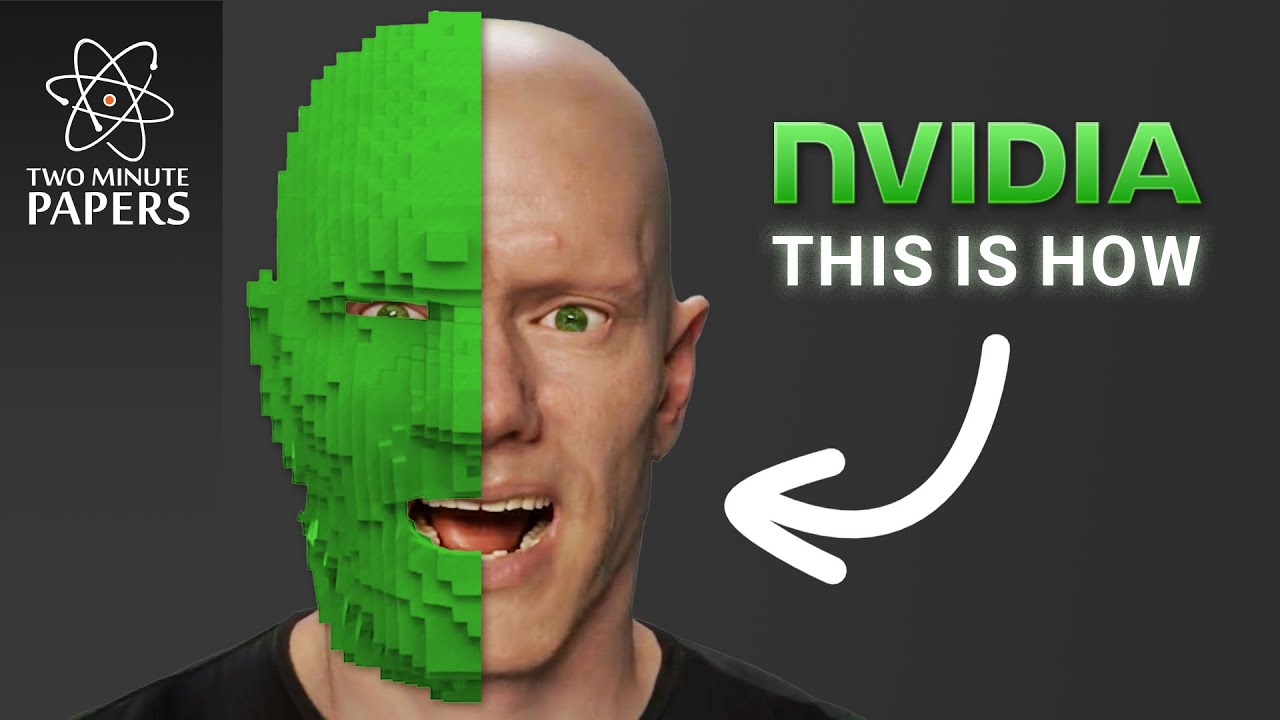The video highlights NVIDIA’s revolutionary AI technology that enables the animation of virtual characters to be over 100 times faster by applying super-resolution techniques to 3D simulations, allowing for highly detailed and realistic movements in real-time applications. It emphasizes the AI’s ability to generalize to unseen expressions and movements, paving the way for fully simulated characters that can interact dynamically, while also encouraging ongoing research and collaboration in the field.
The video discusses a groundbreaking advancement in the animation of virtual characters, particularly in games and animated films, made possible by NVIDIA’s AI technology. Traditionally, animating characters involved simulating their movements based on what looked good, which has been a long-standing practice. However, the new approach allows for simulations that operate at the level of muscles and soft tissues, providing a more realistic representation of movement. The challenge has always been the computational cost and time required for such detailed simulations, making them impractical for real-time applications.
The video introduces the concept of applying super-resolution techniques, commonly used in image processing, to 3D simulations. This innovative method allows for the input of a coarse, blocky simulation, which is then enhanced to produce a highly detailed output. The results are astonishing, with the process becoming over 100 times faster—transforming what once took hours into mere minutes or seconds. This significant speed increase opens up new possibilities for real-time applications in animation and gaming.
However, the presenter emphasizes that simply applying AI to upscale simulations is not enough, as it could lead to entirely different results due to variations in model topology. The key to success lies in leveraging knowledge from higher-resolution simulations while performing the super-resolution. This approach ensures that the output closely resembles the intended character, rather than simulating a different one altogether. The video showcases comparisons between the coarse input, the AI-enhanced output, and a high-resolution simulation, revealing that the results are remarkably similar.
The video also addresses the AI’s ability to generalize to unseen expressions and movements. While some results for new expressions appear wobbly, the AI demonstrates an impressive capability to predict subtle deformations, such as those in the nose caused by mouth movements, even without prior training data for those specific actions. This ability to synthesize realistic movements across different characters and expressions is a significant leap forward in virtual character animation.
In conclusion, the video expresses excitement about the potential applications of this technology in creating fully simulated characters that can interact in real-time, down to the level of individual muscles and facial gestures. The presenter encourages viewers to appreciate the ongoing research and development in this field, highlighting the importance of looking beyond current achievements to envision future advancements. The availability of the research paper and source code for free is also noted, emphasizing the collaborative spirit of the scientific community and the potential for further innovations in computer graphics and AI.
